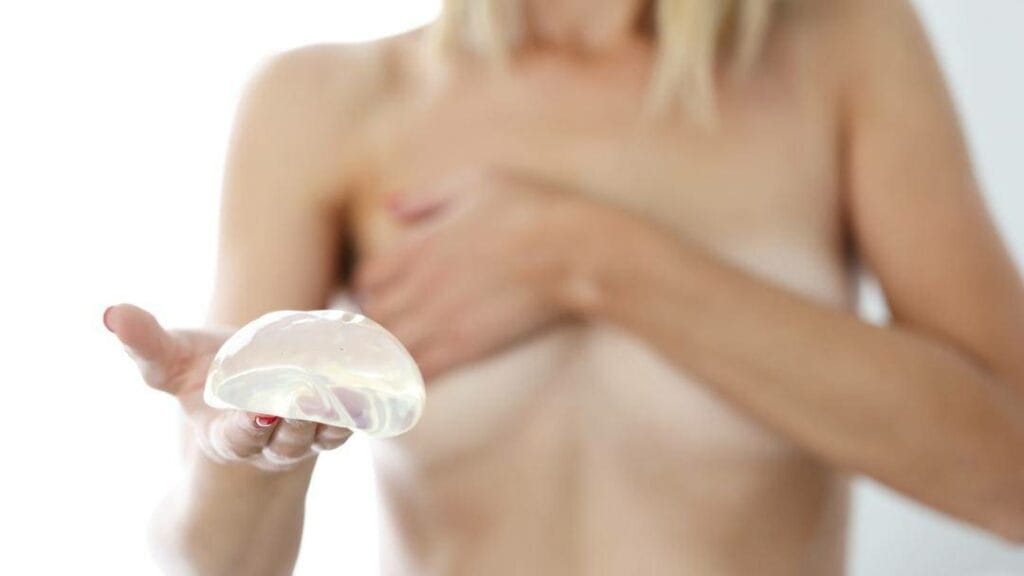Breast augmentation surgery is the most common of aesthetic treatments. This technique, which has been practiced for many years, is chosen by a large number of women to improve their appearance, revitalize their image or correct any malformation. As one of the most practiced procedures worldwide, it has been perfected over time. So much so, that it is considered extremely safe and there is a low percentage of inconveniences. However, there are always some cases of complications associated with this type of surgery. For this reason, this time we have prepared a note to ask ourselves how common is breast implant disease, and offer all the answers on this topic.
How common is breast implant disease: definition and symptoms
First of all, the most important thing is to know what we are talking about when we refer to breast implant disease. It is clear that there may be several different complications in this type of surgery. Allergic reactions to anesthesia, poor healing or infection, or rupture of implants inside the body may occur. All these problems have an accurate diagnosis and can be treated or solved by specific procedures. But when we refer to breast implant disease, we are talking about another complication about which there is not as much information about it.
BII (breast implant illness), or breast implant disease, is a name given to a series of symptoms that can appear as cause of the implants. It is important to mention that the term does not refer to a diagnosed disease. That is to say, there is no scientific consensus about it, since it is not a disease on which too much research has been done. Rather, as a result of the initiative of a group of women who suffered from it, this problem began to become visible.
As we mentioned, to know how common breast implant disease is, it is necessary to consider a series of symptoms that people who undergo these surgeries may suffer from. Muscle and joint pain, chronic fatigue, rashes or other skin problems, hair loss, dry eyes and mouth, various respiratory problems, memory and concentration problems, normal sleep disturbances, recurrent headaches, problems gastrointestinal, anxiety and depression. Although the list may seem extensive, it is about very common problems, which can appear for very different reasons, and which are never presented together in their entirety. This makes the diagnosis very complex, since it is not easy to identify that any of these symptoms may be due to the placement of implants.
In many cases, breast implant disease is usually related to other pre-existing pathologies, mainly autoimmune diseases. Among these conditions, we can mention: rheumatoid arthritis, Hashimoto's syndrome, multiple sclerosis, Raynaud's syndrome, systemic lupus erythematosus, scleroderma, Sjïren's syndrome, mixed tissue diseases. Although there is a relationship between these pathologies and BII, they do not always occur together. In many cases, people who do not have an autoimmune disease may experience symptoms of breast implant disease. It is even possible that these symptoms only become present after several years after the operation. This makes diagnosis even more difficult.
How is breast implant disease diagnosed and how common is it
The main difficulty in answering how common breast implant disease is is how complex it is to diagnose. In fact, since it is not an officially recognized disease, there is no precise diagnosis. Most patients who experience it take years to come up with a diagnosis that can explain the symptoms they are experiencing. Currently, there are no tests or blood tests that can accurately detect the disease. This makes patients turn to different specialists to try to find an answer, but it rarely comes on the first try.
For this reason, it is recommended that, if you suspect symptoms that may be related to BII, you consult a specialist in the field. Carlos Spera is a renowned cosmetic surgeon with years of experience, who has carried out countless implant surgeries. To obtain a diagnosis that can relate this disease to the placement of your implants, and provide a solution in this regard, do not hesitate to make an appointment at our clinic.
What are the causes of breast implant disease
An important point to keep in mind is that the cause of BII is not linked to the material of the implants, since it occurs with both silicone and non-silicone implants. Saline solution. So, going by how common breast implant disease is, this doesn't make a significant difference. In general, the appearance or not of the disease is more related to the predisposition of the patient. Unfortunately, at this time there is no certain way to determine in advance if any of the symptoms will appear after the implant.
The most widespread hypothesis about the cause of the disease is the one that indicates a reaction of the immune system against a foreign object. The inflammatory reaction that the body executes before the introduction of the implant can cause the rest of the symptoms. This reaction can take a long time to appear, so it is not uncommon for symptoms to appear after years. For example, silicone polymers can take years to spread through the body, causing the reaction to take place in a delayed manner.
The definitive verification, which can give certainty that it is BII, is the removal of the implants. In cases where the disease can be identified, it is recommended to permanently remove the implants, that is, without replacing them with new ones. If the symptoms disappear after a while, it is certain that it was a case of breast implant disease. However, this may not happen right away since, as we mentioned, the silicone particles can remain in the body for some time. Either way, removal of the implants is the most effective solution as to how common breast implant disease is. To obtain a diagnosis and, if necessary, remove the implants, do not hesitate to consult the clinic of Dr. Carlos Spera, a specialist in cosmetic surgery.






